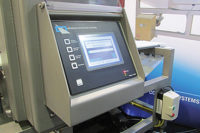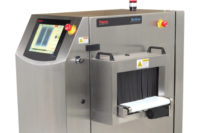Contributed by Ishida Europe
When did you last enjoy a yogurt dessert? Probably quite recently. That’s because 86% of the world’s population enjoys a creamy, calcium-rich cup every week.
But whether we’re eating yogurt for breakfast, as a snack or for dessert, one thing remains the same – a need for perfect quality.
Belgian dairy producer Olympia sells its desserts and puddings throughout Europe. The dairy processor’s commitment to quality has helped keep its dairy-rich treats at the forefront of the market for more than a decade.
Playing a key role in this quality assurance are two Ishida X-ray systems, monitoring thousands of individual cups for foreign bodies to ensure the final product is of the highest standards.
Detection systems play a key role in food safety
There’s always a risk of foreign bodies making their way into food – anything from rubber and plastic to stone or glass. Identifying these before they hit the supermarket shelves is critical for customer safety. Due to the nature of potential foreign bodies and the product packaging itself, metal detection just doesn’t cut it.
This is because, as the name suggests, metal detectors only search for one type of foreign body – and cannot pick up the presence of plastic, rubber or stone. With dessert cups having peel-back aluminium lids, using metal detection could give false-positive results. That means wasted time and batches scrapped unnecessarily, plus the possibility of missing production deadlines. And that is no good when you consider that more than half of the world’s yogurt fans are eating more than they did three years ago.
An X-ray inspection systems can ensure food safety, quality
X-ray inspection systems see what the eye can’t see. They are capable of detecting foreign bodies such as metal, glass, ceramics, rubber and stone. The Ishida X-ray technology used by Olympia features enhanced detection sensitivity, producing a clear and focused X-ray image of the product time after time.
Operators are easily able to spot problems, identify the location of foreign bodies in problem cups and importantly, prevent recurrence by finding the source.
On Ishida’s recommendation, Olympia installed twin X-ray machines, each calibrated to monitor different pack sizes. One machine, which keeps a watchful eye on 100-gram and 200-gram cups (about 3.25 to 7 ounces), can assess 10,000 desserts per hour – that’s 2.7 per second. Meanwhile larger cups of 800 grams (28.2 ounces) are handled by a second machine, which reaches speeds of 4,000 cups per hour.
Whether you’re ramping up production in line with the yogurt boom, or searching for a quality assurance solution in any area of food production, we’re ready to help. Drop our experts a line on info@ishidaeurope.com to learn more about our advanced X-ray inspection machines.
This post was original published on the Ishida blog.





